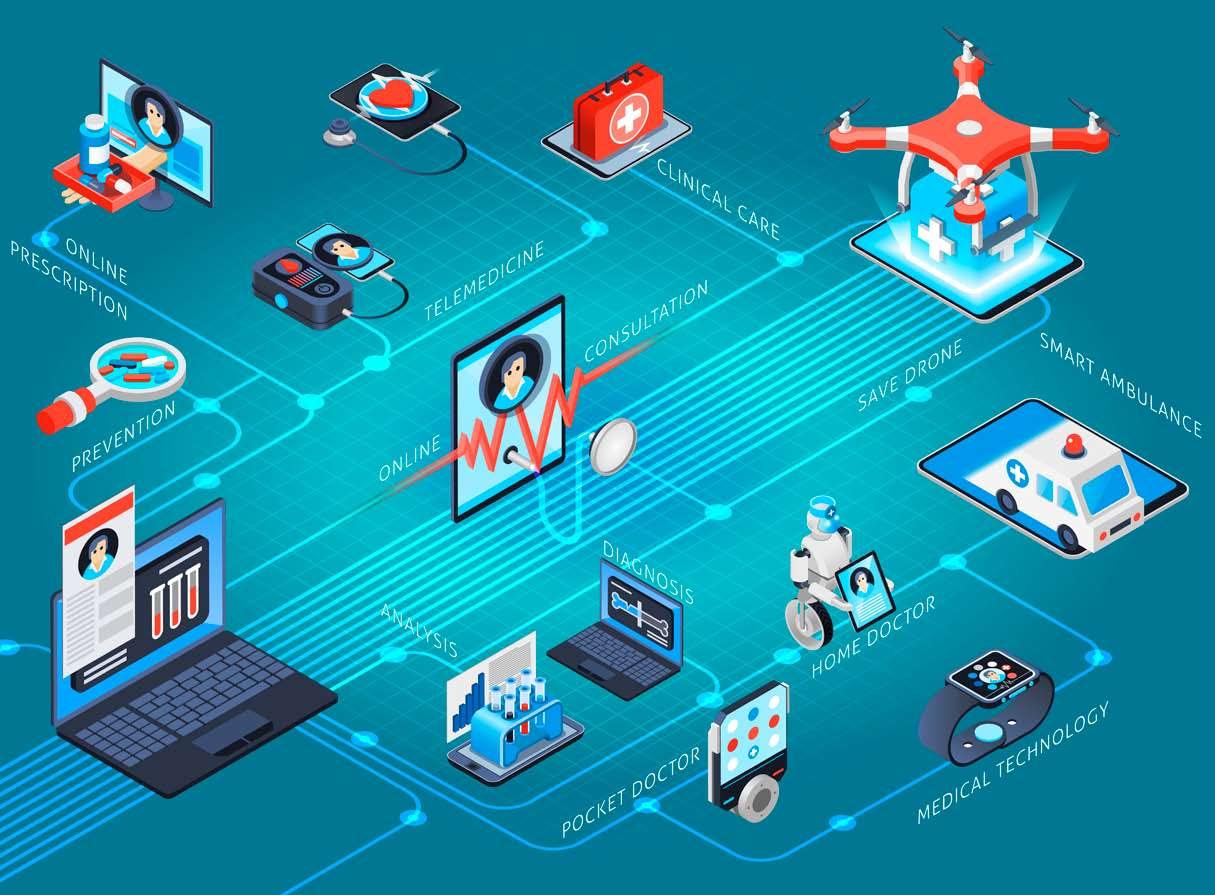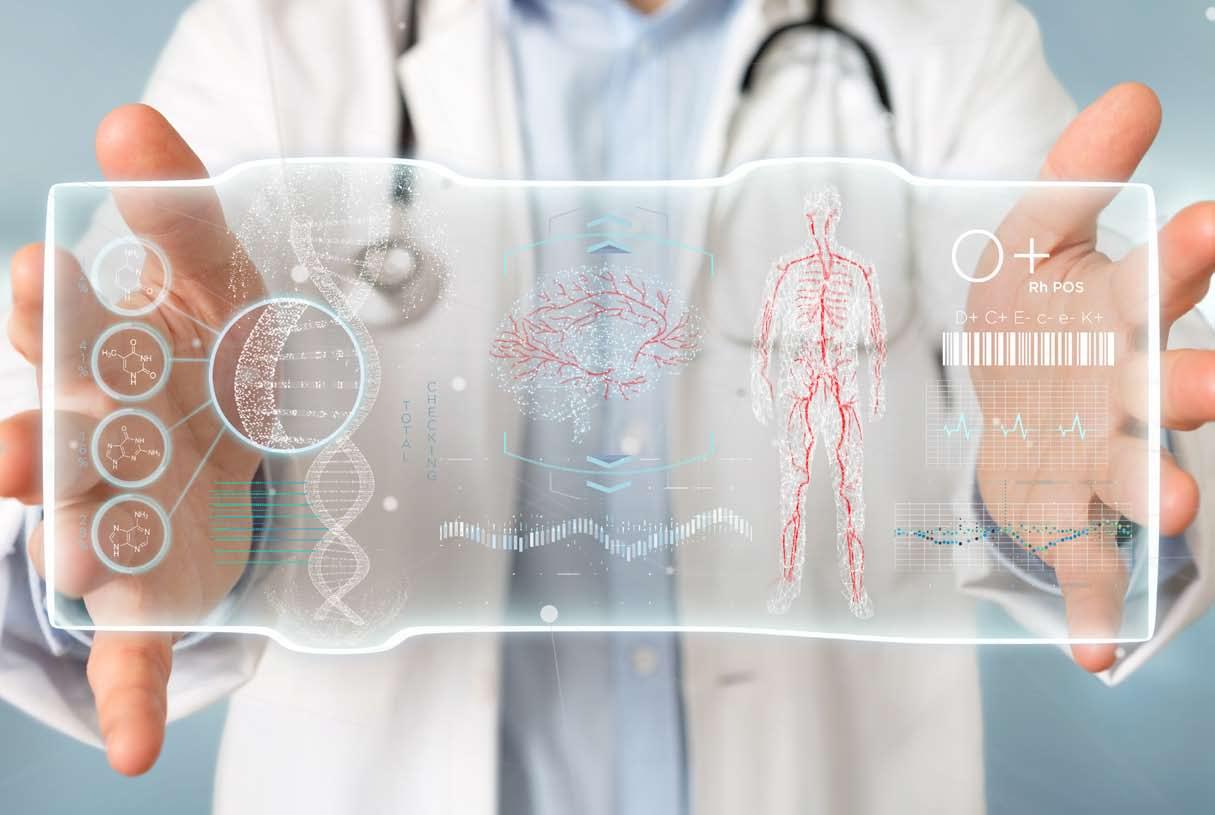
7 minute read
How to prepare medical workforce for digital health
from OSOZ World
by OSOZ Polska
Digital transformation is influencing the competences of doctors and nurses, the way of communication with the patient and how we care for our own health. How are the roles and responsibilities of medical staff changing? What kind of new skills will be required in health care in the age of digitisation?
A completely new health care model All stakeholders in the health sector agree that health care must evolve towards the patient-centric model focusing on a patient’s individual needs, respecting the social and economic ecosystem. Once, the treatment process was much easier. Whenever the patient felt
Advertisement
ill, he or she went to the doctor and received a prescription or referral for further treatment. Nowadays, this model is more complex, and it evolves towards prevention and continuous patient care. Access to new options of digital health care helps to break with the traditional care model. Today, the patient has access to such information and data that a few years ago could only be obtained during a doctor’s interview.
Besides, new technologies based on artificial intelligence, the Internet of Things, telemedicine and mobile solutions enter the market every day. New sources of information such as genetic information and wearable medical devices, which have to be considered in diagnosis and therapy, are available. The task of ensuring that the workforce has the appropriate digital skills is essential if any kind of successful digital transformation is to be seen. Digitalisation in health care will also help to deal with the problem of the shortage of medical staff. According to calculations made by Health Education England, the National Health Service will need 190,000 more clinicians by 2027 unless demand is reduced through better productivity and service transformation. It is impossible to obtain such a workforce either from the field of education and training or recruitment of a trained workforce from elsewhere.
Staff training addresses the concerns The best results of implementing innovations can come from the successful integration within a health care organisation rather than the adaptation of new solutions. The technology is completely pointless until the staff overcome the fear of innovation. There are many key reasons why people resist change. They result from psychological resistance to making a change in particular situations and are frequently connected with technology-related negative experiences. They are of no exception, bearing in mind the difficult process of the implementation of electronic medical records which, at the initial stage of development had, and sometimes still has, an unfriendly user interface. At the time of adopting digitalisation, medical staff can still experience the frustration that comes from the feeling that their time is wasted on keyboard tapping. Such internal resistance can be overcome easily by educating people before new technologies are acquired by clinical practice.
Investing in a staff’s skills will be crucial for the full benefit from the digitalisation of health care. IT tools, methods of joint decision making, skilful collaboration in therapeutic teams and online communication with patients all need to be implemented to traditional medicine. However, the vast majority of health care staff are not ready for it. Medical informatics constitutes a small part of college classes. It is challenging to find time to acquire knowledge in the field of digital health during working hours. A considerable change in the curriculum is needed so that doctors and nurses entering the labour market have not only excellent medical preparation but can also integrate their new skills into current practice. Across the field, health care staff still need to improve their skills in the era of new technologies. The problem was recognised by the National Health Service in the United Kingdom by establishing the NHS Digital Academy. Its goal is to train 300 Chief Clinical Information Officers. These leaders are expected to develop a strong understanding of digital technology and increase their knowledge of using it to improve clinical decision making, the quality of patient care as well as a high standard in terms of the outcome. The resulting qualification is to ensure that they are ready to set a strategy for digital innovation.
The Machine – your new teammate Applying technologies such as digital stethoscopes or algorithms for ECG signal analysis will cause some traditional methods including, for example, auscultation of the patient or interpretation of ECG results, to be no longer practised. Artificial intelligence can improve efficiency and precision in health care. Consequently, this may lead to an increase in the other competencies such as empathy, personal contact with the sick, communication and care. Medical algorithms will be used on a daily basis. The feeling of anxiety will go away as soon as doctors learn how to use the full potential of AI. Artificial intelligence can surely facilitate routine activities, allowing doctors to focus on contact with the patient. Thanks to the integrated data system, the GP, being the only doctor who treats the patient, now becomes a part of the team. The specialist physician will be involved only when there is a risk of a disease occurring after the analysis of the data by the algorithms. However, cooperation with a patient who will gain the status of a partner in the process of treatment and prevention of the disease might be an even greater challenge. The data collected from patients at home will become a more valid source of information which doctors must learn to include. The interpretation of health needs in a wider family, social, environmental and professional context is needed.
In addition to improving the skills of clinicians, an area for completely new professions in health care needs to be found, such as clinical data analysts, medical software engineers, digital medicine specialists or digital transformation and data management directors. However, the change has to start with the leaders, mainly hospital and clinic directors. They make organisational and management decisions and have the greatest impact on the vision, digital development and investment of a medical entity.
New professional competencies will be required, such as medical data processing and privacy protection. Telemedicine, a patient-friendly solution, is an excellent example of doing away with the common false belief that the patient receives the best diagnosis during the medical interview process. Medical staff, including nurses, need to know how to conduct a remote interview in the best way to recognise the earliest symptoms of a disease. A typical working day of a GP will be divided into clinic visits and computer shifts. One day telemedicine will become the standard in health care – provided trust in medical technology continues to grow.
Mathematical formula decides about the quality of treatment The implementation of electronic medical records and the digitisation of all medical and administrative data mean one more change. From now on, using intuition in management of quality and effects of treatment will become more precise and under better control. However, it raises new implications. We will face the challenge of developing care models incorporating elements of ethics and social justice. The more accurately we can measure the results and control the processes, the more necessary the standards of conduct that currently do not exist will be. It can be illustrated with the examples of the relationship between the improvement of health, survival outcome and economic aspect of therapy, or the need of implantation of a hip replacement in relation to the quality of
life, costs of further rehabilitation, care and expectations of the patient. Today medical care prices include the costs of technology and labour. Frequently, side effects and implications for the rest of the patient’s life as well as the need for related medical and social services are not taken into account. Accordingly, health economics will intensively develop, examining the relation of care costs to treatment results, quality and effects from the perspective of each patient individually. Because of the access to new data, a feefor-service reimbursement model which promotes the quantity of services will be changed into value-based care which focuses on the quality of care. The fact that value-based reimbursements are calculated by using numerous measures of quality and the results of the treatment and prevention means a radical transformation of health care.
Under the new models, providers are incentivised to use new ways of diagnosis, focus on prevention rather than treatment, engage patients and use data analytics. They are supposed to provide the patient with coordinated and individual care. All these new methods offer a unique opportunity to transform health care, which is never going to be similar to the one which today’s medicine and nursing students are familiar with. This discrepancy means that new staff will enter the labour market with the fear of innovation, and the potential of the latest technologies will be wasted. This change is not only about learning how to use a program to create electronic medical records. It is so deep that a transformation of education in medicine is required.











